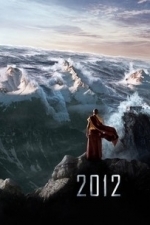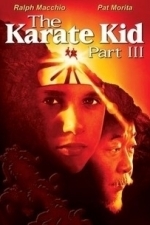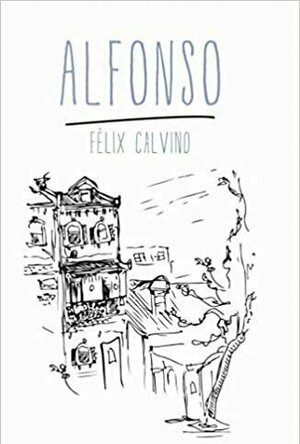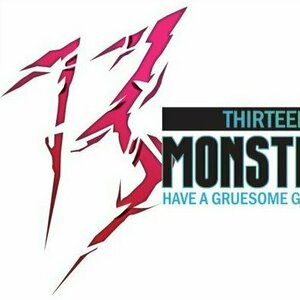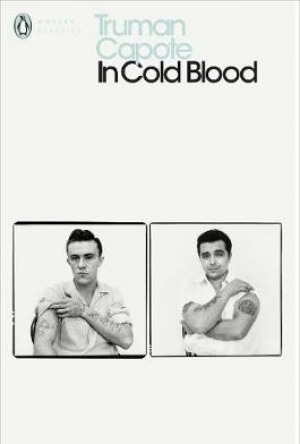Gareth von Kallenbach (980 KP) rated 2012 (2009) in Movies
Aug 8, 2019
In the new film “2012” director Roland Emmerich follows up his other end-of-the world epics “Independence Day” and “The Day After Tomorrow”, with a story about the total devastation of the earth and all life upon it due to an increase of neutrinos from the sun heating the earth’s core causing the displacement of the Earth’s crust.
Keeping to the established formula of the disaster films, 2012 centers around a struggling writer named Jackson Curtis (John Cusack), who learns of the pending catastrophic events while camping at Yellowstone National Park with his children. The presence of forbidden areas and swarms of soldiers and scientists leads Jackson to believe that the local conspiracy radio host Charlie Frost (Woody Harrelson), might be right in his predictions that we are all on borrowed time, and that the increase in earthquakes and fissures along the fault lines are a very bad omen.
Unbeknownst to Jackson, and the majority of the world’s population, U.S. President Wilson (Danny Glover), and his fellow heads of state, are preparing for the coming tragedy. Carl Anheuser (Oliver Platt) and a team of geologists lead by Adrian Helmsley (Chiwetal Ojiofore) are trying to determine exactly how much time they have to save what they can of humanity. Unaware that the fate of mankind is being decided by the politicians and those with money, Jackson and his children soon find themselves rushing to stay alive, with his ex-wife Kate (Amanda Peet), and her boyfriend in tow. Jackson learns of a plan to save select members of the population and pins their very survival on being able to arrive at what they hope is their salvation before time runs out.
Spectacular effects follow as Los Angeles and other cities are swallowed up by massive sinkholes and buried under collapsing bridges and buildings in some of the most amazing sequences of mayhem and destruction ever captured on film. The movie does an amazing job of showing the absolute calamity and chaos and does a passable job with the relationships between the characters. There are some nice supporting performances from Thandie Newton and George Segal. It is just a shame they were not given a bit more to work with. The cookie cutter scenarios that many characters faced seem to have been lifted from the book of disaster film plots.
I did not go into the film expecting realism, as I fully expect the world will go on as normal on December 22, 2012. However, I did have to note some of the absurd developments that strained any semblance of credibility the film may have had. One such scene had the characters being flooded and trapped for an extended period of time by water. Since their locale was near Mt Everest, I had to assume that it was not warm spring water they were submerged in, and had to wonder if hypothermia just went the way of most of the human populace.
Then again, we were dealing with a heated core that was essentially melting the earth’s crust. So maybe the water was warm.
As with all disaster movies, I do have to remember the audience is asked to suspend all disbelief, at least for 160 minutes. While the film does take some vast leaps of logic, there is enough good action, special effects, and strained levity to make this a good distraction, as long as you are willing to check your brain at the door and just enjoy the ride.

Brides Of Sri Lanka
Lifestyle and Magazines & Newspapers
App
Brides Of Sri Lanka is the #1 wedding magazine in Sri Lanka and now available worldwide via the App!...

Superbike Hungary
Lifestyle and Magazines & Newspapers
App
The Nieder & Mayer Ltd. has been publishing Hungary’s SuperBike magazine since December 2001....
Chris Sawin (602 KP) rated Black Swan (2010) in Movies
Jun 21, 2019 (Updated Jun 23, 2019)
Like most ballerinas, Nina (Portman) lives, breathes, and is completely devoted to dance. Artistic director Thomas Leroy (Cassel) is preparing a new spring production of his interpretation of Swan Lake. Nina is next in line to become prima ballerina after the former dancer to hold that spot, Beth Macintyre (Ryder), reluctantly retires. Everything seems to be shifting in that direction until a rather unorthodox, provocative, and unstable (in a dangerous kind of way) dancer named Lily (Kunis) arrives. Lily seems to have an eye for Nina's spot as soon as she walks through the door. Thomas begins to see Nina as the White Swan, which signifies innocence and perfection and Lily as the Black Swan, which is more sensual and deceptive. The problem is that one dancer is required to play both parts. Other than the stiff competition she has to deal with, The Swan Queen role begins to take its toll on Nina who begins to think Lily wants even more than her spot in the production. Nina's obsessive behavior leads to her releasing her dark side that she must now struggle to control.
Aronofsky has always had an exceptional eye for cinematography in his films. His use of micro-photography in The Fountain made the entire film a visually stunning spectacle that will stand the test of time while something like a someone's pupil dilating or a drug deal gone bad in Requiem for a Dream is memorable because of the way and angle Aronofsky shot it rather than relying on its disturbing content to make the scene a classic. Black Swan is no different. Being placed behind Nina whenever she heads to the dance venue gives the viewer a rather unique third person perspective that also gives the impression that you're walking right behind the main character of the film. The intense dream sequences are also shot in a way that flawlessly blur the line between reality and hallucination. Is this really happening or is it all a figment of Nina's deteriorating imagination? Figuring that out is half the film's charm.
The extraordinary main cast is the main ingredient to the film being as great as it is though. The key players all seem to have this twisted side to them that is nearly the exact opposite of the way they first appear to be, which coincides with the Swan Lake theme. Winona Ryder steals most of the screen time she's given whether she's trashing her dressing room, yelling obscenities in Portman's face, or sitting in a hospital room. Even though Mila Kunis seems to play nothing more than her role in Forgetting Sarah Marshall to the most extreme degree on the surface, it's the edge she's given that results in unpredictablity for her character. While Vincent Cassel's performance is strong thanks to his sensual reputation with his dancers and Barbara Hersey is both charming and disturbing as Nina's mother who seems to secretly be trying to live in her daughter's dance shoes after a missed opportunity in her past, it's no surprise to hear that Natalie Portman is the heart of the film. Nina is so consumed with dance that she keeps pushing herself even when her mind and body begin to show her that she's had enough. Her breakdowns are heartbreaking and engaging to watch while her transformation by the end of the film can best be described as a monstrous beauty. It's all thanks to Portman's powerful, phenomenal, tour de force performance.
While some might not be surprised that Aronofsky has created another masterpiece, this may be his most solid and well-rounded film to date. Black Swan is a beautiful, disturbing, and captivating work of art that features gorgeous camera work, an excellent and mindbending story, and one of Natalie Portman's best performances.
Versusyours (757 KP) rated The Karate Kid, Part III (1989) in Movies
Nov 7, 2019 (Updated Nov 7, 2019)
It begins with a return to Part 1 to re-establish the bad blood Daniel (Ralph Macchio) and his aging sidekick Mr Miyagi (Pat Morita) have with John “I saw things in Vietnam” Kreese. This part I couldn’t let slide with me this viewing as the attempted punches by Kreese to contact Mr. Miyagi were as expected as Xmas day falling on the 25th of December each year. One failed attempt was followed by the same type of punch and the same outcome of bloody and smashed knuckles and an insurance claim for the car owners. After this we return to the present and a skulking and hobo like Kreese seeks the refuge of his ponytailed, rich and so 80s stereotyped “you know he is evil due to his involvement in toxic waste” comrade from the past Terry Silver.
Possibly due to giving him his shampoo and conditioner in Vietnam to maintain his ponytail or his heroics in battle, this remains unknown at this time.
What about Daniel and Miyagi you may ask well they are in for an unwelcome surprise when the housing complex they live in has been earmarked for redevelopment. To make matters worse unbeknown to Daniel his Uncle is ill and his mum must have been too busy with this to let Daniel know he is homeless as well as heartbroken after his holiday romance turned sour. Great use of a sentence to end a previous films love interest and subsequent relationship, one of films greatest tricks. At least he has a wad of money for college in his pocket to repair his broken heart. Spoiler alert neither the wad of money and the broken heart are the same for long.
So as it stands not much karate from Daniel but the use of Mr. Miyagi’s subtle use of Daniel as a glorified maid still exists as they branch out in the cutting world of Bonsai. Remember that college money well now its rent and utilities money after luckily realising there are no more Bonsai shops in the street and even luckier there is a pottery shop with a young lady for Daniel to obsess over and fight for her honour as he shows a propensity for in the previous films. The fact that she has a boyfriend only spurs Daniel on like the initial film in the series and makes her more desirable in his lusting eyes.
Enter the 80s Dragon it a supped up Zach Morris Karate Bad Boy, Mike Barnes who is wearing black to dictate his evil intentions. This guy could spell trouble for Daniel as he has links to Silver and thus the plot to ruin Daniels life and happiness for winning a local karate competition the year before takes seed. As someone who has played sports the format of the All Valley Karate Championship, which has been inexplicably changes to allow the defending Champion to only fight in the final where his battle wary and exhausted opponent will be easy prey for a crane kicking Daniel, makes no sense. Maybe Daniel is sick of being typecast as The Karate Kid but this area of the story annoyed me more than a grown man should as initially Daniel can’t even be bothered to sign up for this one fight but after some lying and coercion and some innocent Bonsai paying the price for The Karateless Kid.
More pressure from Barnes and his goons and more Bonsai casualties before Daniel and Mr. Miyagi are split between the tournament and after Daniel decided he will fight that 10 minutes if his life for another sweet trophy. With his training regime disguised as housework and child labour now running low, Miyagi wont train Daniel and thus pushing him into Silvers ponytailed clutches. The once meek and defensive Daniel learns that attack is more effective than Miyagi’s training and with another wooden victim (a repeating plot line in this film) being pummelled and the wax punched off it, Daniel is ready to be the badass he always threatened to be. A night out ends in a broken nose of a Silver bribed punk, Daniel questions who he has become and changes his mind about the tournament once more, only for Silver to admit his true intentions to ruin Daniel as a human being and to avenge John Kreese who is not dead as first explained but high on revenge and the smoking of broken kids karate trophies. They give the new and improved Daniel a beating until appearance of Mr. Miyagi, who may or may not be stalking Daniel, who uses his small but deadly side step and legs to defeat the 3 grown men with ease. There is nothing like a good beating to mend a relationship and together the Bonsai Brothers are back and for the umpteenth time Daniel IS going to defend his title and we all hoped that Barnes would make it through the many rounds to get to the final. Hollywood prevails and after relaxing and watching his potential opponents tiring and having their face smashed in, Daniel like and later day Elvis gets on the stage for a quick round of his greatest hits. In Karate Kid tradition Daniel is good and Cobra Kai are bad, he has honour they are sneaky, they will cheat Daniel wont. Daniel wins as usual and takes his hollow victory and Cobra Kai is no more or until the invention of YouTube at least.
Overall this film fondly remembered until I watched it again. The lack of new ideas left me disappointed and broken like the cliff Bonsai and like that tree I will heal and grow but I will be left with the scars of the better and simple life I used to live. The inclusion of Glen Medeiros on the soundtrack was almost enough to save it and keep it respectable but alas it was not to be, this film is the 80s ponytail of memories; best left cut off.
Ivana A. | Diary of Difference (1171 KP) rated Alfonso in Books
Aug 3, 2020
<a href="https://diaryofdifference.com/">Blog</a>; | <a href="https://www.facebook.com/diaryofdifference/">Facebook</a>; | <a href="https://twitter.com/DiaryDifference">Twitter</a>; | <a href="https://www.instagram.com/diaryofdifference/">Instagram</a>; | <a href="https://www.pinterest.co.uk/diaryofdifference/pins/">Pinterest</a>;
<img src="https://i0.wp.com/diaryofdifference.com/wp-content/uploads/2020/04/Book-Review-Banner-35.png?w=663&ssl=1"/>;
Alfonso is a young man that has moved to Australia to find a better life. Through his story, we follow his feelings and search for purpose.
As a person that moved to another country to find a better life, I can understand Alfonso and I can relate to what he feels and thinks. Coming into another country can be extremely difficult, leaving your family and friends behind, knowing those relationships will never be the same again. Coming to terms with the fact that you will always be a foreigner and have trouble with people accepting you. Trying to make friends and get inside inner circles of people that have been together since high-school – yeah, good luck with that…
Given how I can relate to Alfonso’s situation, and the similarities I have with this character, I thought I would love this book. But I didn’t. Even though I could relate with him, I couldn’t agree with his perceptions and beliefs. Alfonso was always trying to find a girl to spend his life with. Which is normal and expected. However, instead of being his true and authentic self, he desperately tries to be as “less foreign” as possible and adapt to his audience. This is something that seemed to push the potential women away. Not to mention that he was being quite creepy at times (following a girl’s bus schedule and being there before she departs etc.)
Living in a new environment shouldn’t mean that people should stop being who they are and stop believing in what they do, or respecting and practicing the customs from the country they were born and raised from.
All my friends know that in my country we boil and colour actual eggs for Easter, rather than eat chocolate ones. In our home, me and my boyfriend celebrate two Christmases; one on the 25th December, where he does everything by his tradition, and one on 7th January, where I prepare everything in my tradition. And it works. And it’s double the fun and jolly spirit.
I couldn’t relate with the fact that Alfonso feels that he needs to change and adapt, and leave behind his culture. I also couldn’t comprehend the fact that he needs to have a woman to be happy. He couldn’t seem to find happiness with just himself. And maybe, this is again, part of the tradition. In my country, marriages and forming a family are very important, and this may have influenced Alfonso’s behaviour perhaps.
The most upsetting part about this book was that the book ended, and everything remained the same. No earnings, no character development, no closure. Just a bad vibe of negativity, that was lingering in the air and stayed with me for days, like a bad taste in my mouth that you cannot wash with brushing your teeth.
I am not sure how to properly rate “Alfonso”. It was relatable, but conflicting. Very understandable, but unsatisfactory. And I will be honest, I read books that will either make me feel good, or teach me something new (or both), but this book didn’t provide either…
<a href="https://amzn.to/2Wi7amb">Wishlist</a>; | <a
<a href="https://diaryofdifference.com/">Blog</a>; | <a href="https://www.facebook.com/diaryofdifference/">Facebook</a>; | <a href="https://twitter.com/DiaryDifference">Twitter</a>; | <a href="https://www.instagram.com/diaryofdifference/">Instagram</a>; | <a href="https://www.pinterest.co.uk/diaryofdifference/pins/">Pinterest</a>;
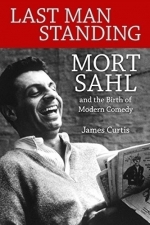
Last Man Standing: Mort Sahl and the Birth of Modern Comedy
Book
On December 22, 1953, Mort Sahl (b. 1927) took the stage at San Francisco's hungry i and changed...
comedy film
Purple Phoenix Games (2266 KP) rated 13 Monsters in Tabletop Games
Dec 5, 2019
As I mentioned in the intro, and as you can see in the first photo below, 13 Monsters starts out as a memory tile-flipping game and then becomes a bash-em’-up for domination. The goal of 13 Monsters is to end the game holding the monsters with the highest total Hit Points (HP). Now how you get there is another matter entirely.
DISCLAIMER: We were provided a prototype copy of this game for the purposes of this review. These are preview copy components, and I do not know for sure if the final components will be any different from these shown. Also, it is not my intention to detail every rule in the game, as there are just too many. You are invited to download the rulebook, purchase the game through the Kickstarter campaign running until December 20, 2019, or through any retailers stocking it after fulfillment. -T
To setup 13 Monsters, a randomized 9×9 grid of monster tiles are spread across the play surface with the longer title tile placed square in the middle (see what I did there?). Place the five d6 on the table to be used by any player. Determine the first player (whomever is the most beastly) and you are ready to play!
Turns are played in phases where you will initially be hunting the playing field trying to find matching monstersets to build a complete monster. Monstersets are horizontally matching tiles belonging to the same monster. So the top set is the head, the middle is the eyes, and the bottom is the body of the monster. This phase will continue in turns until multiple players have at least one monsterset. Things now start getting interesting.
Once you have at least one monsterset you can, before hunting from the field, offer to trade monstersets with other players. You may also use an ability named “Sacrifice,” which allows you to rearrange your monstersets to create a more powerful monster. Why would you want to rearrange? Monsters come in five elemental flavors – fire, water, earth, air, and ghost. Monsters with matching elemental monstersets are more powerful than those with mismatched elemental monstersets. This will come into play later when the monsters battle for supremacy.
Battles. Once you have a complete monster (head, eyes, body) you can, on your turn and before hunting, attack another monster. When attacking, both the attacker and defender will be throwing the five dice in hopes of ending with the highest total of pips of a matching set (like five 6s on the d6). The winner will then claim a monsterset from the involved monster (or separate monsterset) and add it to their collection. Monsters with more elementally-matching sets will be able to throw the dice more times versus a completed monster with mismatched elemental sets, so THAT is why using Sacrifice can make or break a battle.
There are other special abilities that are unlocked with different combinations of monsters: “Permafrost” allows the player to place a die on a tile that other players will not be able to flip on their hunting turn. However, once a battle is initiated all Permafrost dice are removed from the board to be used in the battle, so it is not a long-term tactic to be used. “Prophet” allows the player to flip over three tiles instead of the normal two tiles and can be very powerful when used correctly – you need to have a “Monster O.G.” which is a monster with all matching tiles belonging to the same completed monster. The final ability is “Supernova” and can only be used by a completed 13th Monster (the only Ghost-element monster, shown below). Supernova allows the player to sacrifice the 13th Monster in order to absorb (steal) a complete monster from any player and add it to their personal collection. The 13th Monster then leaves the game, but the controlling player will still receive the HP points for having collected and used it.
Play continues in this fashion until all tiles have been collected from the playing field. Once the final pair is taken, players are then allowed to declare one final battle against any opponent in hopes to bolster their final score. The player with the most HP shared among their completed monsters is the winner and ultimate Beast Master!
Components. Again, we were provided a prototype copy of the game, but from what I understand, the final production copy of the game will be very similar to this version if not exactly the same. What comprises the game is a ton of monster tiles and five dice. That doesn’t sound like a lot, and it’s not. But these are great quality tiles and normal quality dice (which I am hoping will become pink to match the main color found throughout the game). I love the overall art style. The art is what really pops out at you because the monsters are all uniquely weird and intriguing and kinda cute at the same time. I also very much appreciate that the team thought to include little bubbles next to the element icon on the tiles to indicate to which layer the tile belongs: head, eyes, body. Excellent touch. Overall the components are great, and the rulebook is killer. Outstanding work went into making this game visually stunning.
Is it a good game? It is certainly a very cool spin on Memory and adds modular monster building and player vs player battles where you can win each others’ components. I love it! Even though I am horrible at memory games, this gives me options once I do find a monsterset. I can trade and attack my way to building more and better monsters – but the dice have to be on my side, and I’m cool with that. If you are looking for something to add to your collection that is a brilliant hybrid of many different mechanics and looks absolutely incredible on the table, then please check out 13 Monsters. It rewards tactics, but also has that element of luck to help balance everything out. I’m a big fan!
Hadley (567 KP) rated In Cold Blood: A True Account of a Multiple Murder and Its Consequences in Books
Aug 2, 2020
The novel, which was published in 1965, is an eyewitness account of Capote's visitation to the scene of the murder as well as meetings with the murderers and townspeople- - - a retelling of the crime and aftermath, mostly from the eyes of those affected, by hundreds of hours of interviews and interrogations. The novel, ultimately, was the end of Capote which led him to alcoholism that took his life in 1984.
Like most small-town murders, a tension between residences is created when a well-known and well-liked family of four is brutally murdered, and everyone begins to point a finger at the other: "But afterward the townspeople, theretofore sufficiently unfearful of each other to seldom trouble to lock their doors, found fantasy re-creating them over and again - - - those somber explosions that stimulated fires of mistrust in the glare of which many old neighbors viewed each other strangely, and as strangers." Fortunately, the KBI (Kansas Bureau of Investigation) didn't allow these accusations to keep them from finding the real killers.
" 'Deep down,' Perry continued, 'way, way rock bottom, I never thought I could do it. A thing like that.' " Perry Smith, one of the murderers, confesses to his cohort and partner-in-crime, Richard Hickock, about murdering the Clutter family. "Presently, he said, 'Know what it is that really bugs me? About that other thing[Clutter murder]? It's just I don't believe it- - - that anyone can get away with a thing like that.' And he suspected that Dick [Richard] didn't, either. For Dick was at least partly inhabited by Perry's mystical-moral apprehensions. Thus: 'Now, just shut up!' "
Capote writes clearly of the impact that Smith's and Hickock's past may have played leading up to the murders, mostly focusing on Smith's traumatic childhood. During the trial portion of the book, a psychologist is brought in to point out how the two murderers may not have been responsible for their actions due-to instances in their past - - - a horrific car crash in Hickock's that left him with a lop-sided face and black-out spells, as well as Smith being physically and emotional abused by his alcoholic mother and father. In exploring these traumas, In Cold Blood leaves the impression that these two men were merely ticking time bombs and that the Clutter family, unfortunately, had to pay for it.
The trauma shared by Hickock and Smith help to shape the two murderers into actual human beings rather than monsters throughout the novel: one scene, where we get to read a letter to Smith from his last living sister, readers get to see how he was perceived by his family members, as his sister goes on to degrade him to the maturity level of a child and that she is above him because of that- - -but she also reveals her jealousy of their father loving him more than he ever loved her (despite the excessive abuse). A close friend of Smith's tells him to be careful writing her anymore because he believes that: 'they can only serve to increase your already dangerous anti-social instincts.'
Part of the narrative, too, is the KBI agent in-charge of the Clutter murder, Alvin Dewey: One day while visiting Holcomb's well-known cafe (Hartman's) where Dewey is told he looks awful from weight loss and fatigue - - - Dewey recalls that he had spent: 'two wearying and wasted days trying to trace that phantom pair, the Mexicans sworn by Paul Helm to have visited Mr. Clutter on the eve of the murders.' And then he gets heckled by a local, who wants to know why he hasn't found the people responsible yet,but Dewey simply smiles and walks away, having put up with numerous people being angry that the murders were taking so long to solve.
But it wasn't footwork that got the pair arrested, it was an old cellmate who had given Hickock the idea that there was $10,000 in a safe at the Clutter farm that came forward: (read this on my blog because I had to cut it out since my review was too long!).
Meanwhile, readers also get to experience Hickock and Smith's troubles as they are on the run after the murders which is done masterfully by Capote. And although one would assume that the killers would stay as far away from Kansas as possible, the two end up back there, only to miraculously get out before the police can catch up with them. The pair decide to head to Florida, where, on December 19, 1959, an entire family was murdered in the exact same way as the Clutters; Hickock and Smith both adamantly denied that they were involved with it - - - and back in 2012- - - Hickock and Smith's bodies were exhumed to compare their DNA with a profile found on one of the victim's clothing: they were not a match. The case remains unsolved til this day.
" Presently he[Smith] came across an inner-page story that won his entire attention. It concerned murder, the slaying of a Florida family, a Mr. and Mrs. Clifford Walker, their four-year-old son, and their two-year-old daughter. Each of the victims, though not bound or gagged, had been shot through the head with a .22 weapon. The crime, clueless and apparently motiveless, had taken place Saturday night, December 19, at the Walker home, on a cattle-raising ranch not far from Tallahassee."
Not soon after the pair leave the Florida beaches, they are arrested on what they believe to be parole violations, but it's clear, when the arresting officers are KBI agents that they had been caught for the Clutter murders. " 'Listen good, Perry. Because Mr. Duntz[KBI agent] is going to tell you where you really were...' Midway in the questioning, after he'd[Smith] begun to notice the number of allusions to a particular November weekend, he'd nerved himself for what he knew was coming, yet when it did, when the big cowboy with the sleepy voice said, 'You were killing the Clutter family' - - - well, he'd damn near died. That's all. "
The confession that follows is the most intense part of the book, given in it's entirety, readers finally get to know what happened to the Clutter family that cold night in November, 1959. Smith reveals that he never had the intention to kill anyone in the home, and that when the safe hadn't been found, he had fully intended to leave, even without Hickock, but what kept him there was Hickock threatening to rape Nancy Clutter. Smith states that he hates people who can't control themselves sexually, and that he didn't allow his partner to touch her at all. He also reveals that he thought about killing Hickock afterwards,stating: " no witnesses."
Capote didn't write 'In Cold Blood' until after Hickock and Smith were executed. The amount of interviews, court room appearances, and even witnessing the executions of both murderers shines through in this novel. But the book has also brought about doubters; a handful of people have since come forward to state that Capote's masterpiece is either 'not the full story' or 'completely wrong.' Just as recent as 2017, a man came forward with a 'manuscript' of a book that Hickock was writing, that contained a different confession on how and why the murders took place- - - Hickock states in this unpublished manuscript that a man by the name 'Roberts' had hired him and Smith to kill the Clutters.
Whether or not you believe that Capote wrote the whole truth or some of the truth, this novel is flawless and beautiful. The writing is poetic and the flow of the story keeps moving, page after page, never stopping long enough to bore the reader. I highly recommend this book as a MUST READ for anyone who loves the True Crime genre.

ICE Standard
Medical
App Watch
“The World’s #1 Emergency Medical Contact Information Application” As Demonstrated on The...
medical
